If you’re wanting to record your own music, an audio interface is an easy and affordable way to get started. They are an entry point for recording music at home, enabling musicians to connect sound sources to a computer for recording and playback. With an audio interface, you can record vocals, guitar, bass, drums, keyboards and more with ease.
In this guide, we’ll discuss everything you need to know about audio interfaces, including an overview of their main features and how they work. We’ll also outline the factors to consider when buying one and reveal the most popular interface on the market.
Without further ado, let’s get started!
What Is An Audio Interface?
What Is An Audio Interface?
An audio interface is a piece of hardware that connects microphones and instruments to a computer, allowing producers to record audio directly into a digital audio workstation (eg. Pro Tools, Ableton Live or Logic Pro). At the same time, an audio interface makes it possible for a computer to output audio to a pair of studio monitors.
An audio interface enables musicians to record audio with professional-level quality without having to buy expensive equipment or hire a studio engineer. They also make it possible for users to record multiple tracks at once, rather than having to record one instrument at a time.
Audio interfaces work by converting the analog signals produced by a microphone or instrument into a digital format that a computer can understand. Standard audio interfaces can be connected to a computer via a USB, FireWire or Thunderbolt cable and include a number of inputs and outputs in the form of 1/4″ and/or XLR jacks.
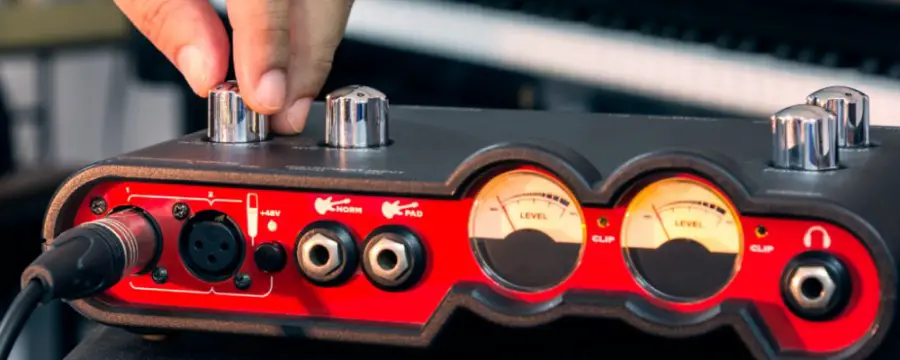
Features Of An Audio Interface
• Inputs
The inputs on an audio interface allow you to plug in different types of microphones and instruments for recording. The number of inputs on an interface will determine how many instruments and microphones you can record at once. Beginner interfaces usually come with two microphone inputs. Inputs on an audio interface are in the form of 1/4″ and/or XLR jacks.
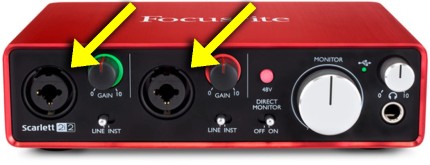
• Outputs
Audio outputs, which are found on the back of most audio interfaces, allow you to connect a pair of speakers or studio monitors to your computer. The output on all good audio interfaces is balanced, meaning audio played back through speakers or studio monitors is tighter and cleaner than an unbalanced connection.

• Headphones Output
The headphones output is a crucial feature of an audio interface. It allows you to hear your project or a metronome while recording, ensuring that only your instrument is picked up by the microphone. This port also has a volume knob, so you can adjust the volume on your headphones independently.
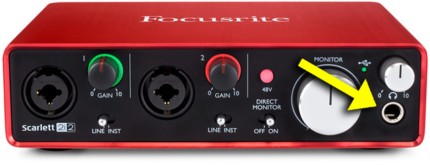
• Gain Knobs
Gain knobs are used to adjust the volume of an incoming signal before it gets recorded. Typically, each input on an audio interface has its own gain knob. In addition to a gain knob, each input on an audio interface will generally contain a switch to select whether the signal is coming from an instrument or line-in.
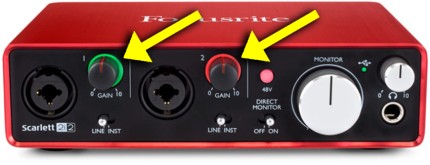
• Phantom Power
Phantom power allows users to record using a condenser microphone without the need for a power supply from an external source. Condenser microphones have active electronics that require a power source, while dynamic mics are passive and do not need phantom power.
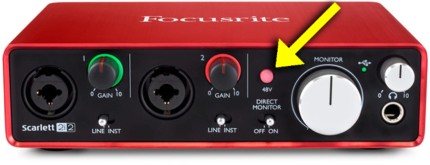
Audio Interface Connection Types
Most audio interfaces can be connected to a computer in one of three ways: via a USB, FireWire or Thunderbolt cable.
• USB
USB is the most common connection type in audio interfaces, allowing users to easily connect their interface to their computer for use with recording or editing software. USB-powered interfaces use the same cable as many other household electronic appliances such as printers and scanners.

• FireWire
FireWire transfers data more consistently than USB, which makes it better for high-quality multichannel recording. The downside of FireWire audio interfaces is that a small number of computers come equipped with these types of ports.

• Thunderbolt
Thunderbolt is Apple’s high-speed data transfer protocol which enables users to connect an audio interface and other devices directly to a Mac computer. Thunderbolt is currently the fastest connection type available, but it is only available with Mac.
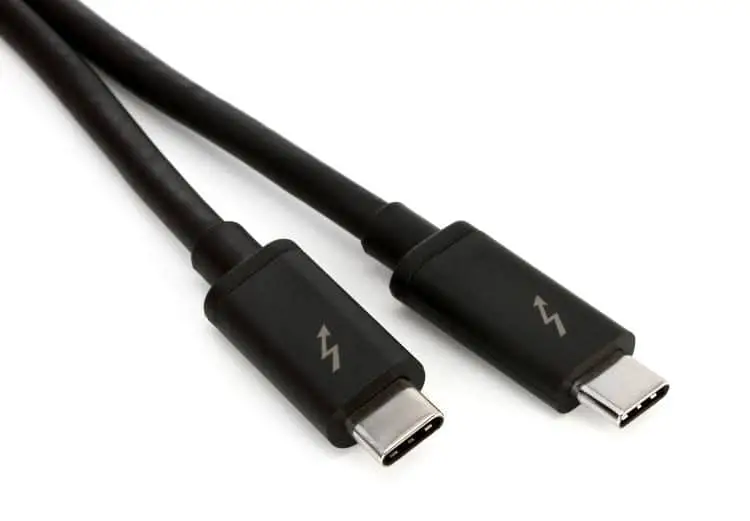
What To Consider When Buying An Audio Interface
• Determine Your Requirements
First of all, you will need to think about what you require from an audio interface. For example, how many inputs and outputs will you need. The more features you’re after, the more options you’ll have for recording but the more expensive it will cost.
• Connection Type
Next, think about what kind of connection type your computer has. Most computers use USB or Thunderbolt connections these days, but if yours uses something else (eg. FireWire), make sure the interface you’re looking to buy can connect to your computer.
• Price
When choosing an audio interface for yourself, consider how much you’re prepared to spend. The price range for audio interfaces is large, with some costing less than $100 and others costing thousands. There are many options out there, no matter what your budget is.
• Compatibility
Make sure that the interface you are looking at is compatible with your computer. Some interfaces are only compatible with specific operating systems (Mac or Windows) so make sure you get one that will work with your computer.
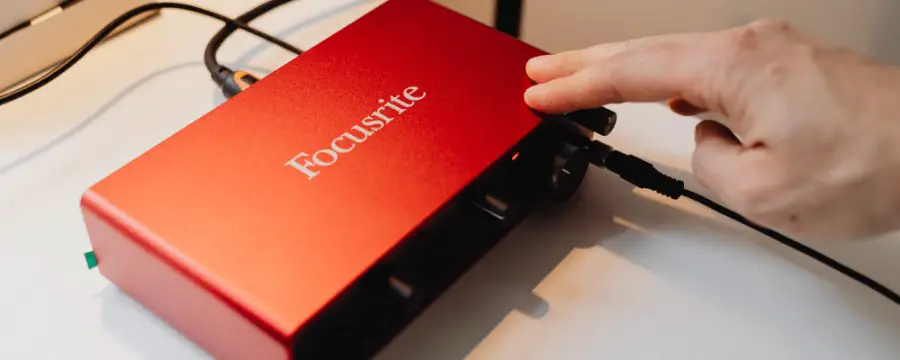
How Much Should I Spend On An Audio Interface?
The more features you want, the higher your budget will need to be for an audio interface. Once you know what features are important to you, it will help determine how much you will likely need to spend.
If you’re just starting out and don’t have much money to invest in your studio, you should have no problem finding a basic interface for around $100. This will come with fewer features than pro-level interfaces that cost upwards of $1,000 or more, but as long as your budget is in line with how many inputs and outputs you need, then it should work well for what you want to do.
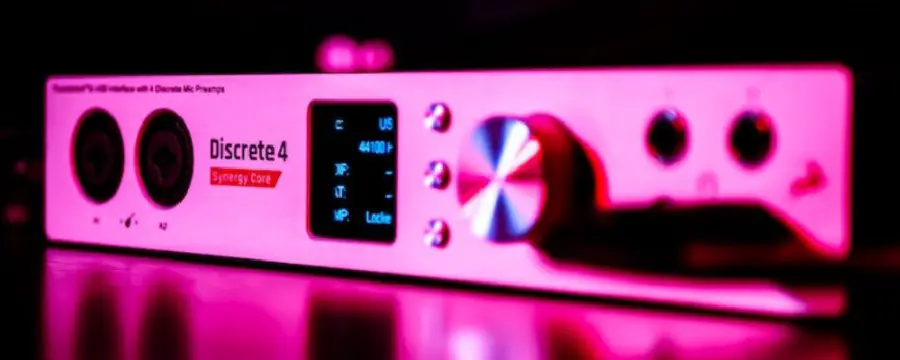
Can You Record Without An Audio Interface?
Yes, it is possible to record without an audio interface. You can use a USB microphone or your computer’s built-in microphone. However, the problem with these two options is the quality. The quality of the audio recorded using either of these two alternatives isn’t going to be as good compared to recordings using an audio interface.
The other problem is that both of these options only allows for the recording of one sound source at a time. If you have multiple people in your band or you’re trying to record multiple tracks at once, then using either of these methods won’t work well for you as you likely won’t have enough inputs to record multiple instruments at once.

Most Popular Audio Interface
Focusrite’s Scarlett 2i2 is the most popular audio interface on the market.
This audio interface is a great entry-level interface that can be used with a Mac or PC. It features two XLR/1/4″ combo inputs and two balanced 1/4″ outputs, so you can plug in microphones and instruments, as well as connect headphones and studio monitors.
The Scarlett 2i2 is compact yet versatile, so no matter where your music takes you, you’ll be ready to record straight away. The 2i2 a great choice for beginner to intermediate musicians, producers, and podcasters who need to record vocals or instruments onto their computer. It works with all major DAWs including Logic Pro, Pro Tools, Ableton Live, Cubase and more.
You can buy the Focusrite Scarlett 2i2 from Amazon here.
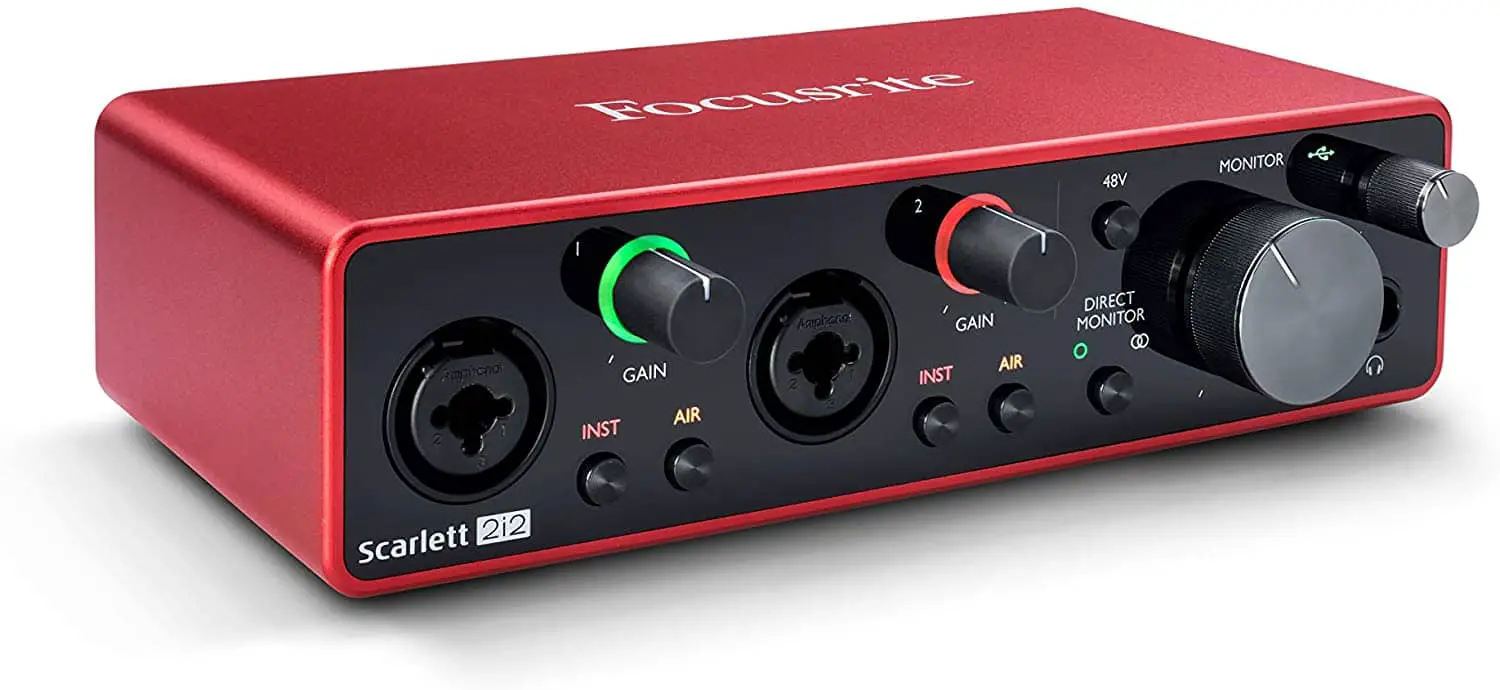
Want To Know More?
Here at Live Aspects, we have dozens of useful lessons and tutorials created to enhance your music production skills and help speed up the learning process. You can access our huge range of music theory lessons and production tips and tricks here.